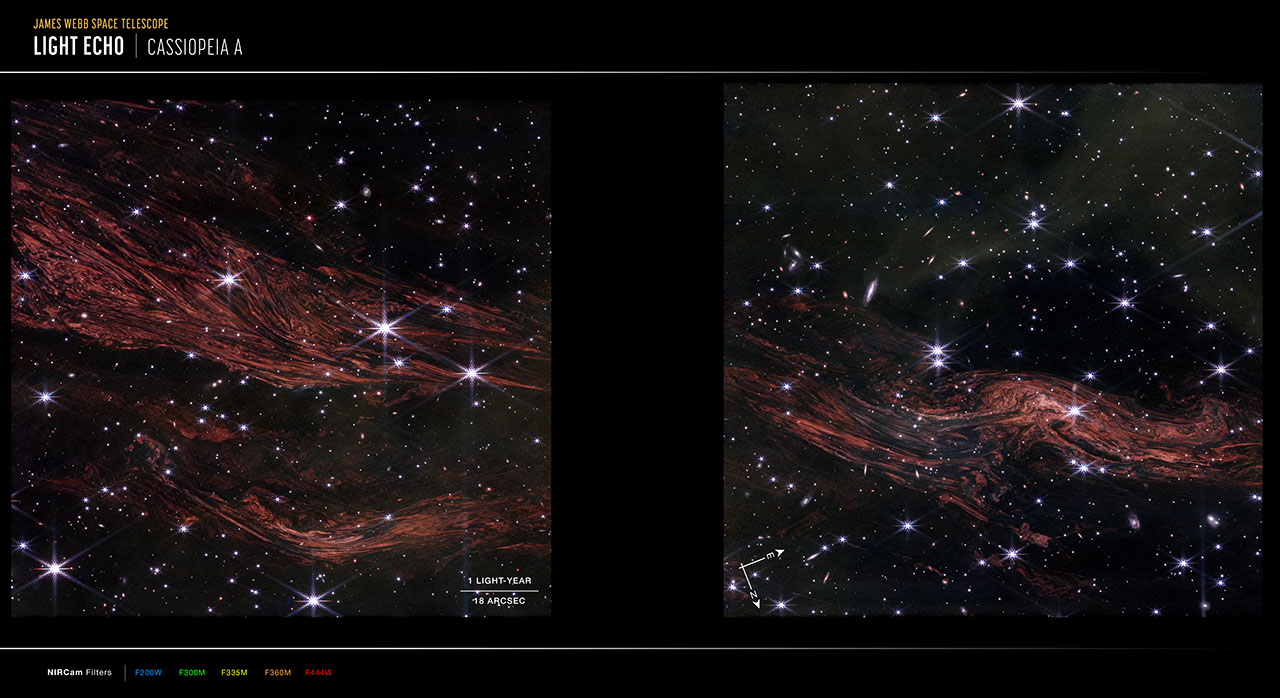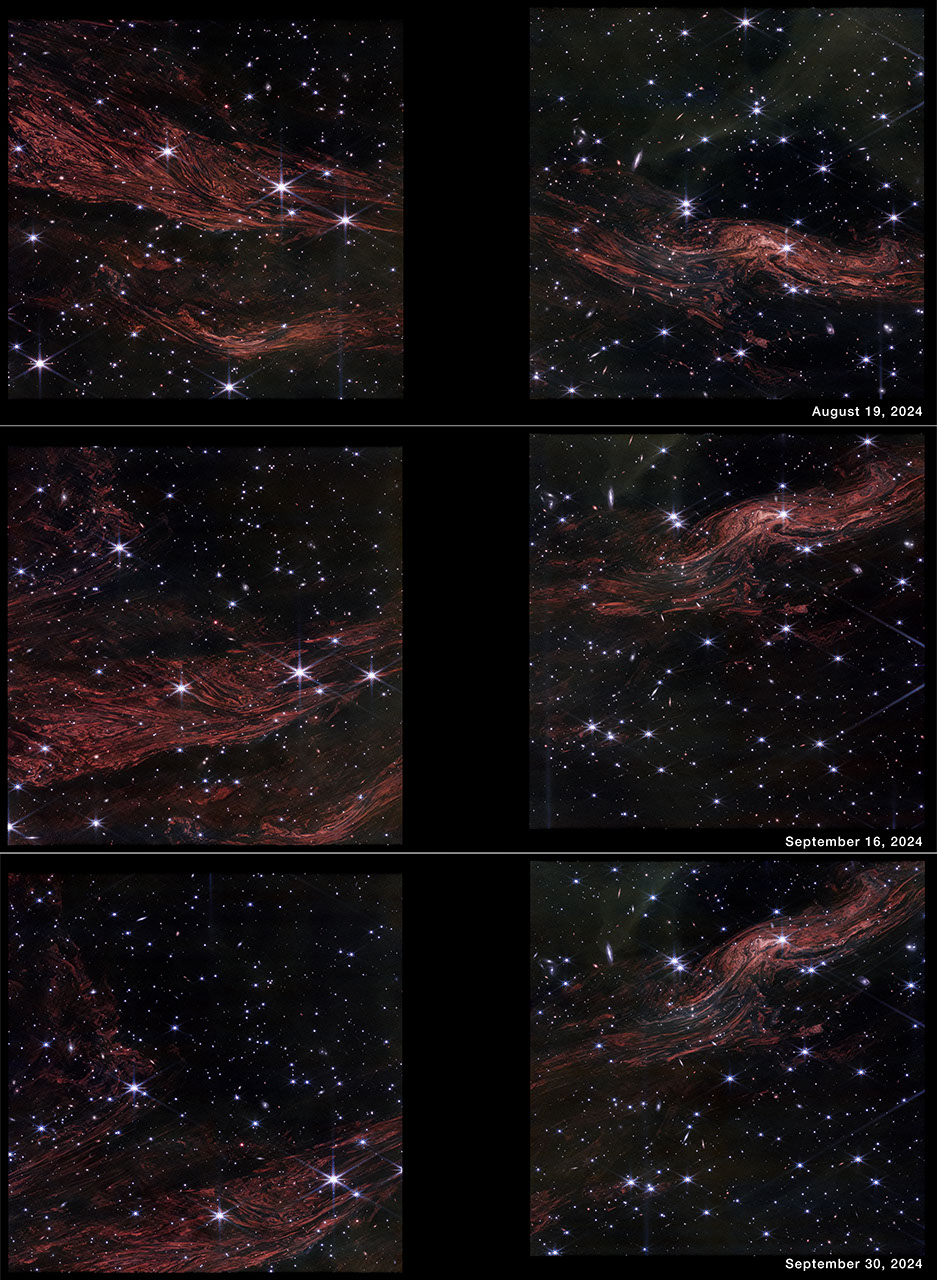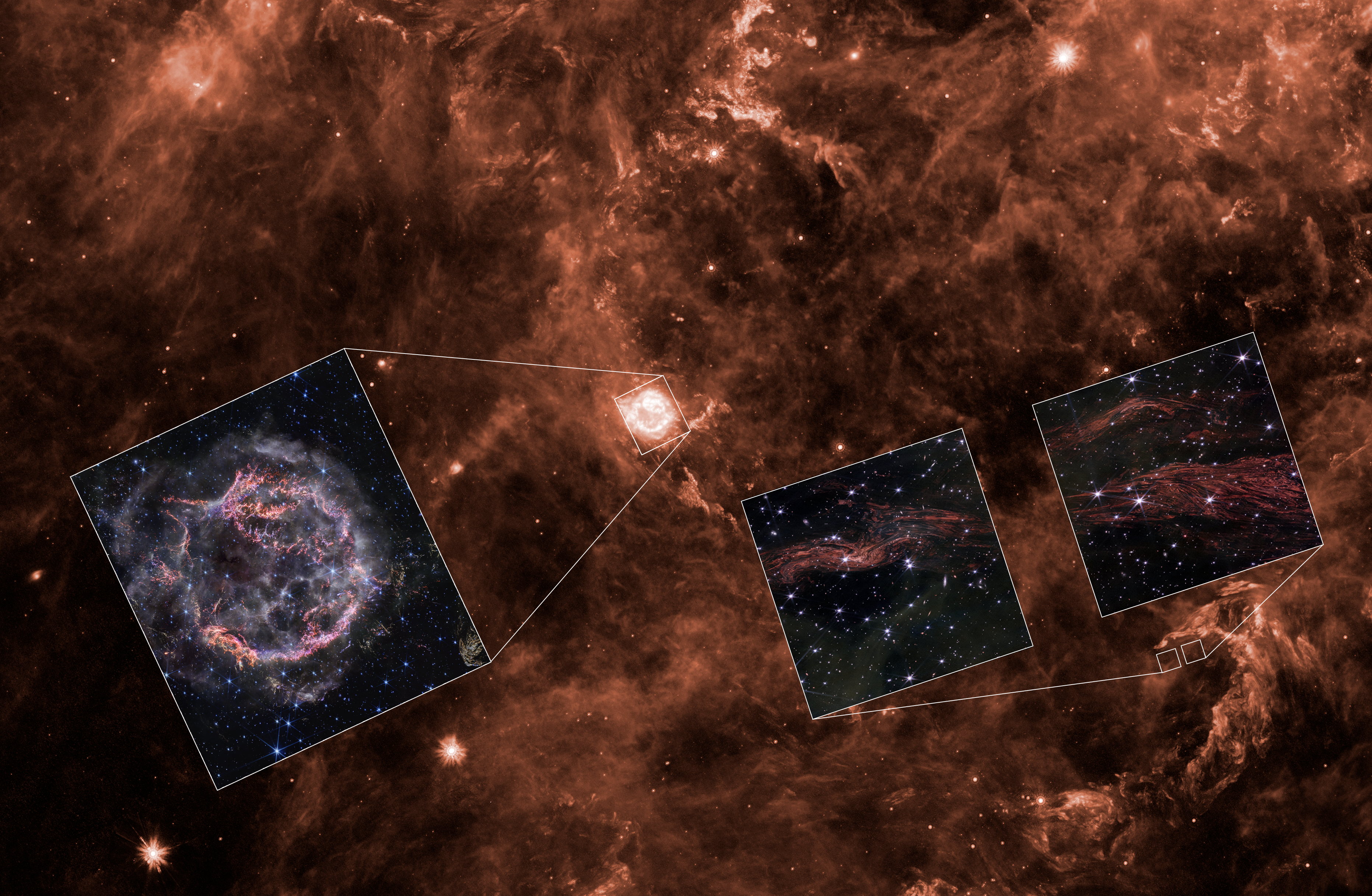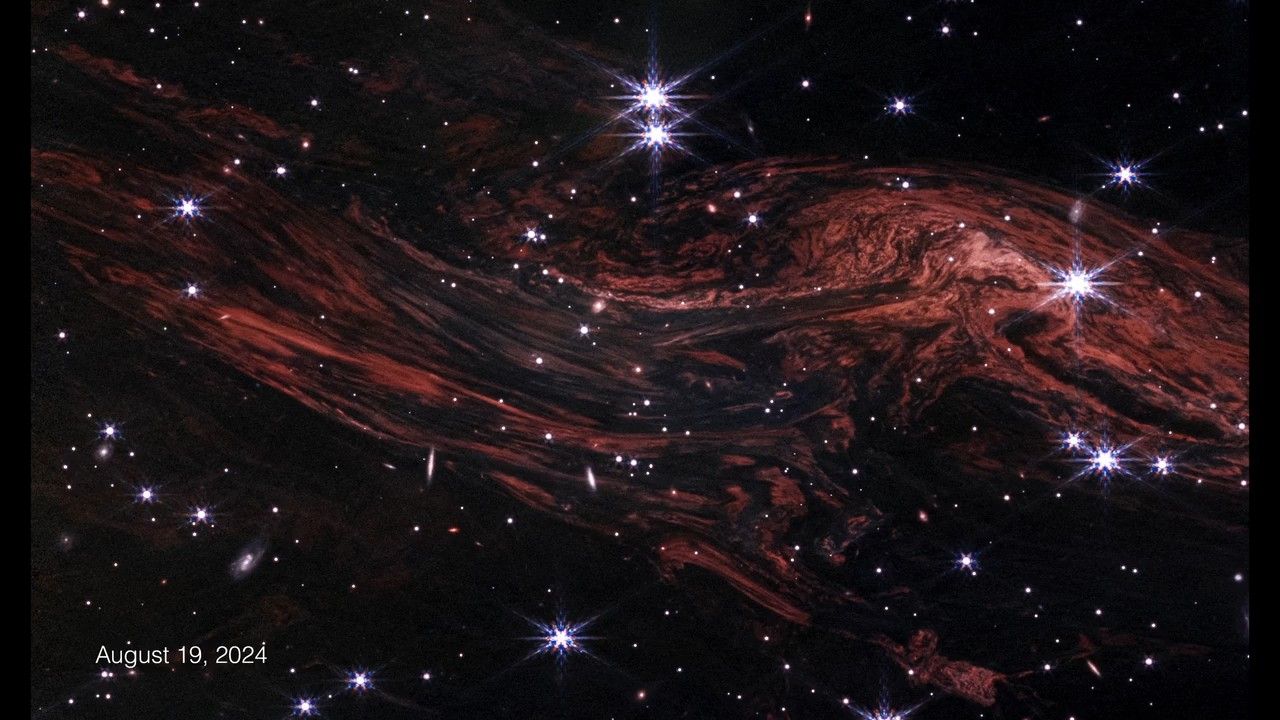1 min read
Cassiopeia A Light Echoes (Compass Image)

Image of light echoes near Cassiopeia A captured by Webb’s NIRCam instrument, with compass arrows, scale bar, and color key for reference. The north and east compass arrows show the orientation of the image on the sky. Note that the relationship between north and east on the sky (as seen from below) is flipped relative to direction arrows on a map of the ground (as seen from above).
The scale bar is labeled in light-years, which is the distance that light travels in one Earth-year. (It takes one year for light to travel a distance equal to the length of the bar.) One light-year is equal to about 5.88 trillion miles or 9.46 trillion kilometers.
This image shows invisible near-infrared wavelengths of light that have been translated into visible-light colors. The color key shows which NIRCam filters were used when collecting the light. The color of each filter name is the visible light color used to represent the infrared light that passes through that filter.
Read the full image caption here.
About the Object
- R.A. PositionR.A. PositionRight ascension – analogous to longitude – is one component of an object's position.23:16:03.93
- Dec. PositionDec. PositionDeclination – analogous to latitude – is one component of an object's position.+58:22:31.59
- ConstellationConstellationOne of 88 recognized regions of the celestial sphere in which the object appears.Cassiopeia
- DistanceDistanceThe physical distance from Earth to the astronomical object. Distances within our solar system are usually measured in Astronomical Units (AU). Distances between stars are usually measured in light-years. Interstellar distances can also be measured in parsecs.About 11,000 light years
About the Data
- Data DescriptionData DescriptionProposal: A description of the observations, their scientific justification, and the links to the data available in the science archive.
Science Team: The astronomers who planned the observations and analyzed the data. "PI" refers to the Principal Investigator.This image was created with Webb data from proposal: 5451 (J. Jencson). Image processing: Joseph DePasquale (STScI).
- InstrumentInstrumentThe science instrument used to produce the data.NIRCam
- Exposure DatesExposure DatesThe date(s) that the telescope made its observations and the total exposure time.August 19, September 16, and September 30, 2024
- FiltersFiltersThe camera filters that were used in the science observations.F200W, F300M, F335M, F360M, F444W
- Object NameObject NameA name or catalog number that astronomers use to identify an astronomical object.Light Echoes from Cassiopeia A
- Object DescriptionObject DescriptionThe type of astronomical object.Light echoes from a supernova explosion
- Release DateJanuary 14, 2025
- Science ReleaseNASA’s Webb Reveals Intricate Layers of Interstellar Dust, Gas
- CreditImage: NASA, ESA, CSA, STScI, Jacob Jencson (Caltech/IPAC)

These images are a composite of separate exposures acquired by the James Webb Space Telescope using the NIRCam instrument. Several filters were used to sample specific wavelength ranges. The color results from assigning different hues (colors) to each monochromatic (grayscale) image associated with an individual filter. In this case, the assigned colors are: Red: F444W, Orange: F360M, Yellow: F335M, Green: F300M, Blue: F200W
Related Images & Videos

Cassiopeia A Light Echoes (NIRCam Images)
These shimmering cosmic curtains show interstellar gas and dust that has been heated by the flashbulb explosion of a long-ago supernova. The gas then glows infrared light in what is known as a thermal light echo. As the supernova illumination travels through space at the speed...

Cassiopeia A Light Echoes (Spitzer Context)
This background image of the region around supernova remnant Cassiopeia A was released by NASA’s Spitzer Space Telescope in 2008 . By taking multiple images of this region over three years with Spitzer, researchers were able to examine a number of light echoes. Now, NASA’s James...

Cassiopeia A Light Echoes Time-lapse
This time-lapse video using data from NASA’s James Webb Space Telescope highlights the evolution of one light echo in the vicinity of the supernova remnant Cassiopeia A. A light echo is created when a star explodes or erupts, flashing light into surrounding clumps of...
Share
Details
Laura Betz
NASA’s Goddard Space Flight Center
Greenbelt, Maryland
laura.e.betz@nasa.gov
NASA, ESA, CSA, STScI, Jacob Jencson (Caltech/IPAC)






























